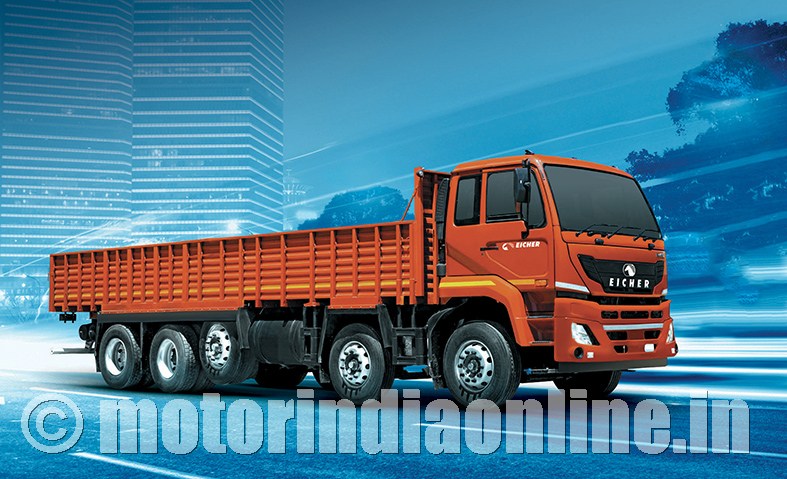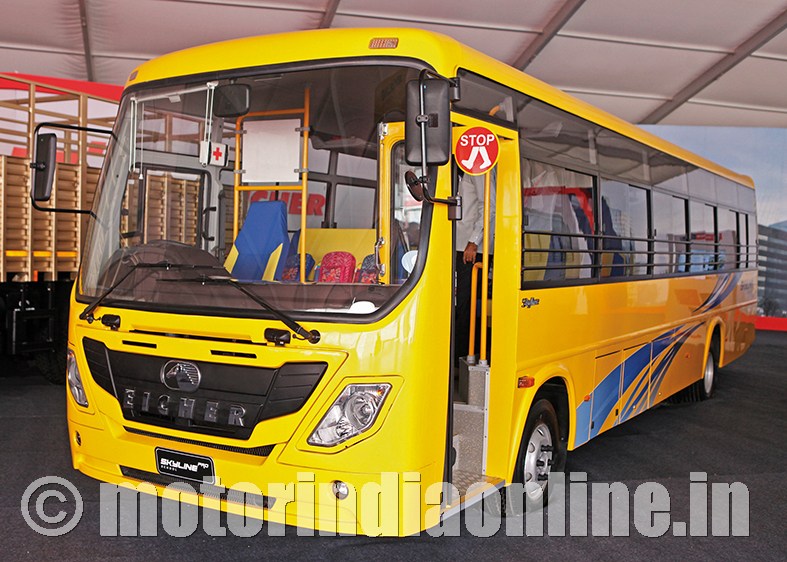“Various issues that we observe in Indian traffic scenarios include -driving with open doors, over speeding, overloading in buses including on roof, bus rollover in hilly terrains etc. We at VECV are taking all these aspects in design of buses and technologies like door interlock (vehicle not moving when door is open), tamperproof electronic speed limiters, no roof luggage carriers, steering & suspension design for confident handling by driver, are already incorporated across various segments,” points out Mr. Rajender Singh Sachdeva, Chief Operating Officer, Eicher Trucks and Buses.

Excerpts:
Safety in truck segment – SCV to M&HCV
Mandatory and other safety requirements
VECV has key focus on safety areas dealing with the safety of drivers, & passengers. VECV vehicles are equipped with ABS, Seat Belts, crash worthiness Cabs, Speed limiting devices, under protection devices for front, rear and side, etc. Further advance safety measures such as electronic Stability control system and ADAS (Advance driver assistance System) are under development at fast pace which will be introduced in future.
Measures for reducing accidents on road
Majority of Road accident happens due to Human fault and remaining due to Infrastructure, Failure of Mechanical components and Bad weather condition. Introduction of new safety measures such as ABS, introduction of electronic features and Speed limiters are Steps towards right direction which will results in reduction of Accidents. In addition, new ADAS features which are under development will assist drivers with pre information, warnings and Vehicle controls in avoiding accidents.
VECV has always taken initiatives in providing special driver training programmes which helps truck drivers to follow better and safe driving practices. Further, Stricter Overloading norms, clear road signs, wider highways, overbridges will result in perceptible reduction in accidents.
Safety apprehension at higher road speeds
With increased speed limits, there is also need to improve and maintain road infrastructure side with clear road signs, dividers, flyovers, etc. Further Technologies in vehicles, e.g., AEBS, frontal collision warnings, Tyres for high speeds, alcohol detectors, etc., can be provided (must be mandated) which will help to reduce accidents.
Cabin and body building safety standards
There are major differences in Cabin and Body build at OEM and other subcontractor body builders. OEM follows laid down safety standards like crashworthiness, roll over, etc., which are fully or partially missing on subcontractor or body builder side. Further OEMs trucks are verified by Govt. agencies like ARAI, VRDE, etc., for safety norms. Recent move of Govt. with Truck code and Bus body code and its stricter implementation will reduce these gaps but same needs to be implemented rigorously. No safety norms are laid for unorganised sectors & since it costs OEMs to provide such safety features, population of OE built cabin is very low.
SAFETY IN BUS SEGMENT
Mandatory and other safety requirements
There is high focus on overall driver ergonomics, comfort enhancement & AC provisions, so as to reduce driver fatigue, which is a potential cause for several accidents. Also, overall driver visibility, is a critical design consideration in VECV buses to ensure traffic safety. Incorporation of rear view camera is a big leap here.
Moreover, there are few segments and duty cycles, where repeated or continuous braking (like in city buses and downhill operation) is general phenomenon. To take care of this, we are giving wider and better brakes, exhaust brakes, engine brake (in future design) and retarders, so as to eliminate the possibility of brake overheating & potential chances of tyres bursting.
Various advance features like Passenger Information system (PIS) and use of telematics features in buses is gaining importance day by day in modern bus transport. These features are already incorporated in VECV buses. Particularly for school buses- GPS connectivity, saloon area camera, parent-school–child communication device (RFID kit), emergency door exit foot step, soft handles & seat belts on all school seats and fire safety features (as explained later) are integrated in all products. Nevertheless, our entire bus product range meets the bus body code and roll over safety requirements even though the regulation is not yet mandated.
Fire hazards safety features
Particularly to take care of fire safety various features within the electrical circuitry, aggregate packaging to minimise fire risk, & battery cut-off switches are incorporated in all buses. Technologies like automatic fire detection and suppression system, smoke detector, fire proof insulations, flame retardant interiors, multiple emergency exits on both sides & rear, roof hatches, clear escape path/gangways add to the overall fire safety of the products.
Technology impact on safety in the times ahead
Indian traffic scenario is highly diverse & unpredictable in nature and overall safety consciousness in not there generally in public. So any dependency of safety through control on surrounding traffic is not a full proof solution, especially with increasing number of buses and the traffic density in future. To address this, advance technologies mentioned above are the need of the future and we at VECV are already working on them.
Light-weighting necessity and trend
Light-weighting in commercial vehicles: Indian commercial vehicle industry is going through a crucial phase of transformation in technology & emission norms & the upcoming decade will be challenging for each market player to meet key CV performance index like fuel efficiency, freight efficiency, emission reduction & input cost reduction. Central and state government initiatives like putting stringent cap on overloading and improving transportation safety standard through either indigenous research or feasible alignment with European norms are another area of challenge which are being looked as opportunity to drive initiatives like ‘Same Truck More pay load’. Light-weighting has come out to be attractive and economical alternative to meet above challenges.
VECV has been striving to put forth best in class overall vehicle efficiency index to customer in both key segments of transportation, Trucks and buses. We at VECV are running various programs of weight reduction across range of products in trucks and bus segment.
Major work & potential of light-weighting is still hovering around geometrical optimization, like re-crafting of parts, inactive material removal and high energy absorption structure design. VECV engineers are using extensive methodology and software’s to reengineer current parts and achieve optimal strength to weight ratio.
In order to summarize, conception of alternate material & process is the dire need of commercial vehicle industry for light-weighting initiative. Same has both direct & indirect benefit on performance index like efficiency and environment. Research shows that “100 kg mass reduction achieved on a passenger car saves 8 grams of CO2 per km at the exhaust”.

